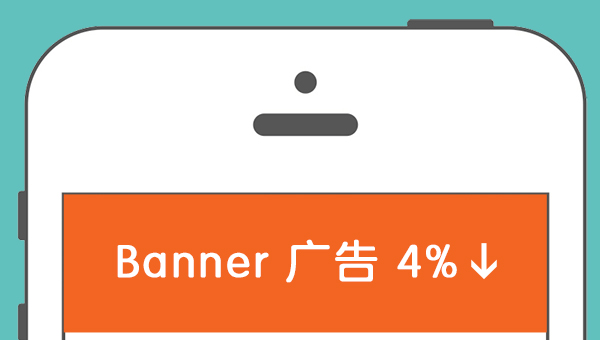Data sourced from Vdopia; additional content by Warc staff
采编 SOCIAL ONE 主编 Jean Wong
根据最新研究报告,横幅广告(Banner ads)只占娱乐品牌4%的投放比例,品牌更倾向于视频或其他富媒体的形式,因为消费者在移动端通过智能手机观看视频的比例正在上升。
移动视频广告公司Vdopia分析了在过去一年时间覆盖两千三百万人的娱乐移动广告战役,发现在过去六个月的市价,横幅广告的比例从14%下降到了4%,而视频和富媒体广告占据了96%的比例。
该研究同时发现,移动广告主把关注的重点放在长视频上也许是个错误,因为短视频通常会更加有效。10秒视频广告比的有效率高出平均65%,而只占移动视频广告支出的3%;与此形成差距的是20秒和30秒广告,它们占移动视频广告支出的3/4, 然而效果却分别低于平均27%和13%。
有意思的是,效果好并非来源于短视频的完成度高,而是视频越短,人们就越容易与其互动,10秒广告的有效率是20秒广告的两倍。
目前预算分配侧重长视频广告很有可能是因为广告主只是将原先放在电视广告的资源放到移动端。在这种情况下,想提升互动率可能采取的方法是把次要的讯息移除,把视频变短,并添加一些互动的元素。
Original Content
LONDON: Banner ads now account for just 4% of mobile ads run by entertainment brands as they turn to video and rich media formats to take advantage of people's increasing video consumption on smartphones, according to a new report.
Mobile video advertising company Vdopia analysed entertainment mobile ad campaigns viewed by 23m people in the UK over a year-long period and found the number of mobile ad campaigns run by entertainment brands through Vdopia's technology increased by 46%, making it the highest spending sector on mobile ad campaigns.
At the same time, the share of banner ads dropped from 14% to 4% in just six months. Video and rich media formats now account for 96%.
"The mobile ad landscape transformation from static banners to more engaging and interactive video and rich media formats is astonishing," said Farzad Jamal, Vdopia's European vice president.
But he was not surprised to see entertainment brands leading the change, pointing out that 23m Britons viewed entertainment content via smartphones and were over 40% more likely to recall ads than the average smartphone owner. Further, the entertainment sector accounts for 15% of UK smartphone app time, according to Nielsen figures, behind only social and games.
Vdopia's report also revealed that mobile advertisers may be misdirecting their investment into longer video formats as shorter ones are actually more effective.
Its Video Performance Index (VPI) – a measure of the effectiveness of video ads by completion and click through rates – showed that ten second ads were 65% more effective than the average video ad but attracted just 3% of mobile video adspend. Longer ads – of 20 seconds and 30 seconds – accounted for nearly three-quarters of entertainment brands' mobile video ad spend but were 27% and 13% less effective, respectively, than the average.
"You'd expect shorter ads to have a higher completion rate but, generally, the shorter the ad the more likely people are to engage with it – ten second ads are twice as effective as 20 second ones," Jamal said.
He suspected that the reason for budgets being allocated to longer ads was that marketers were simply re-purposing TV ads for mobile. This, he said, was "a viable solution if the ad can be shortened by removing any secondary messaging and adding an interactivity element".
"Even for a mobile-dedicated video ad, keeping the length short should prove to be a winning strategy for marketers," he concluded.






















